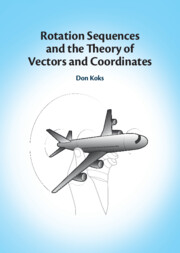Refine search
Actions for selected content:
48584 results in Computer Science
Robust machine-learned algorithms for efficient grid operation
- Part of
-
- Journal:
- Environmental Data Science / Volume 4 / 2025
- Published online by Cambridge University Press:
- 22 April 2025, e24
-
- Article
-
- You have access
- Open access
- HTML
- Export citation
The set of maximal points of an
 $\boldsymbol{\omega}$-domain need not be a
$\boldsymbol{\omega}$-domain need not be a  $\boldsymbol{G}_{\boldsymbol{\delta}}$-set
$\boldsymbol{G}_{\boldsymbol{\delta}}$-set
-
- Journal:
- Mathematical Structures in Computer Science / Volume 35 / 2025
- Published online by Cambridge University Press:
- 21 April 2025, e5
-
- Article
- Export citation
A CLASSICAL-MODAL INTERPRETATION OF SMOOTH INFINITESIMAL ANALYSIS
-
- Journal:
- The Review of Symbolic Logic / Volume 18 / Issue 2 / June 2025
- Published online by Cambridge University Press:
- 21 April 2025, pp. 367-397
- Print publication:
- June 2025
-
- Article
-
- You have access
- Open access
- HTML
- Export citation
Algorithmic regulation at the city level in China
-
- Journal:
- Data & Policy / Volume 7 / 2025
- Published online by Cambridge University Press:
- 21 April 2025, e37
-
- Article
-
- You have access
- Open access
- HTML
- Export citation
Reinstating trust in elections in the era of artificial intelligence and emerging technologies
- Part of
-
- Journal:
- Data & Policy / Volume 7 / 2025
- Published online by Cambridge University Press:
- 21 April 2025, e38
-
- Article
-
- You have access
- Open access
- HTML
- Export citation

Rotation Sequences and the Theory of Vectors and Coordinates
-
- Published online:
- 17 April 2025
- Print publication:
- 24 April 2025
Leveraging causality and explainability in digital agriculture
- Part of
-
- Journal:
- Environmental Data Science / Volume 4 / 2025
- Published online by Cambridge University Press:
- 17 April 2025, e23
-
- Article
-
- You have access
- Open access
- HTML
- Export citation
Sharing photographs on social media enhances recollection of photograph-related details
- Part of
-
- Journal:
- Memory, Mind & Media / Volume 4 / 2025
- Published online by Cambridge University Press:
- 15 April 2025, e3
-
- Article
-
- You have access
- Open access
- HTML
- Export citation
ROB volume 42 issue 12 Cover and Back matter
-
- Article
-
- You have access
- Export citation
Advancing early warning mechanisms: an augmented intelligence-driven model for predicting multidimensional vulnerability levels in Afghanistan – CORRIGENDUM
-
- Journal:
- Data & Policy / Volume 7 / 2025
- Published online by Cambridge University Press:
- 14 April 2025, e36
-
- Article
-
- You have access
- Open access
- HTML
- Export citation
Exponentially preferential trees
- Part of
-
- Journal:
- Network Science / Volume 13 / 2025
- Published online by Cambridge University Press:
- 14 April 2025, e5
-
- Article
-
- You have access
- Open access
- HTML
- Export citation
Historical review of 40 years of Robotica and its way ahead
- Part of
-
- Article
-
- You have access
- HTML
- Export citation
ROB volume 42 issue 12 Cover and Front matter
-
- Article
-
- You have access
- Export citation
A design method for tendon-driven serial manipulators using controllable block triangular form of structure null space matrix
-
- Article
-
- You have access
- Open access
- HTML
- Export citation
AI-driven FMEA: integration of large language models for faster and more accurate risk analysis
-
- Journal:
- Design Science / Volume 11 / 2025
- Published online by Cambridge University Press:
- 14 April 2025, e10
-
- Article
-
- You have access
- Open access
- HTML
- Export citation

Internet Cures
- The Social Lives of Digital Miracles
-
- Published by:
- Bristol University Press
- Published online:
- 12 April 2025
- Print publication:
- 19 December 2024
Coherent Taylor expansion as a bimonad
-
- Journal:
- Mathematical Structures in Computer Science / Volume 35 / 2025
- Published online by Cambridge University Press:
- 11 April 2025, e9
-
- Article
- Export citation




































